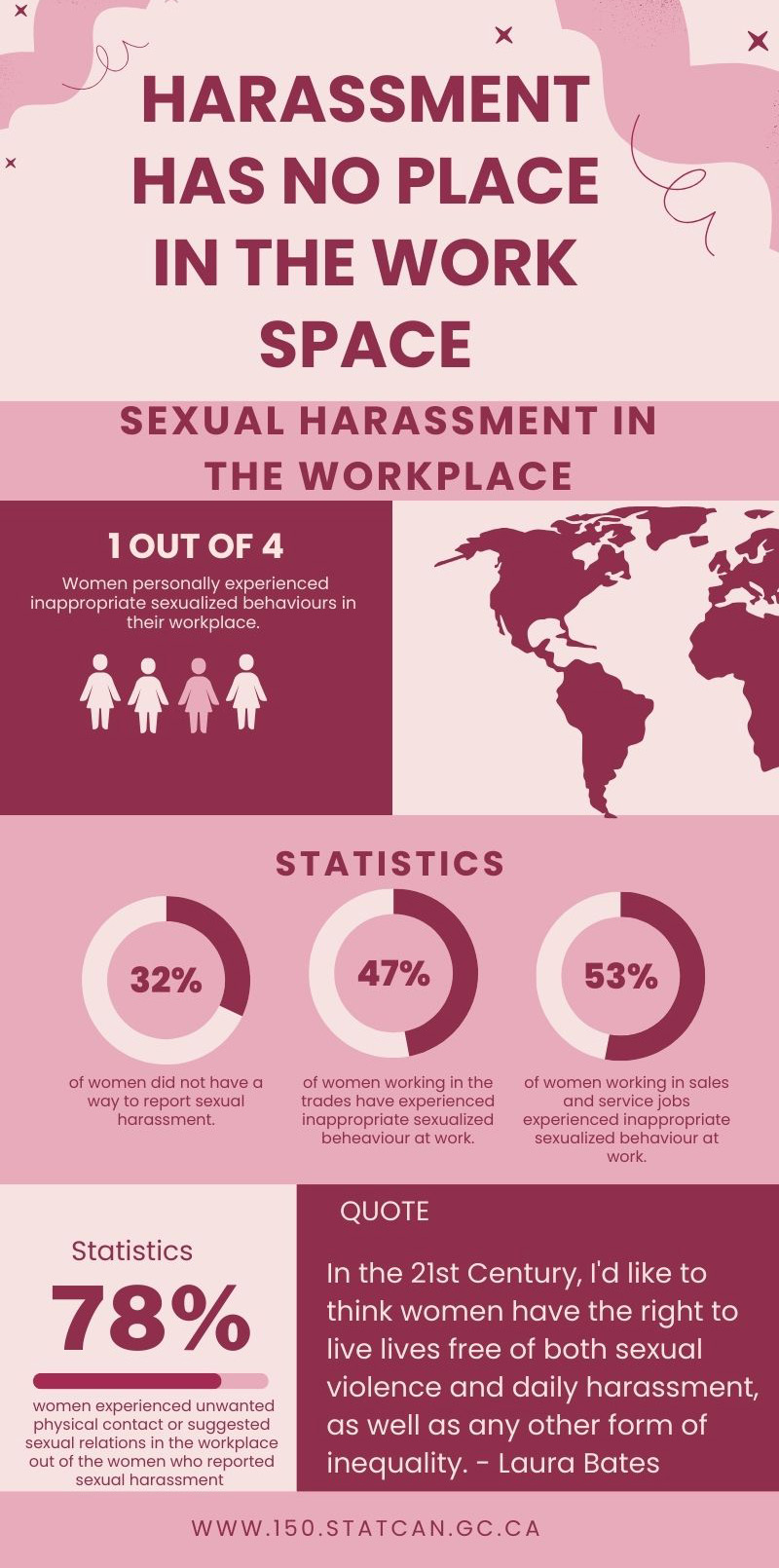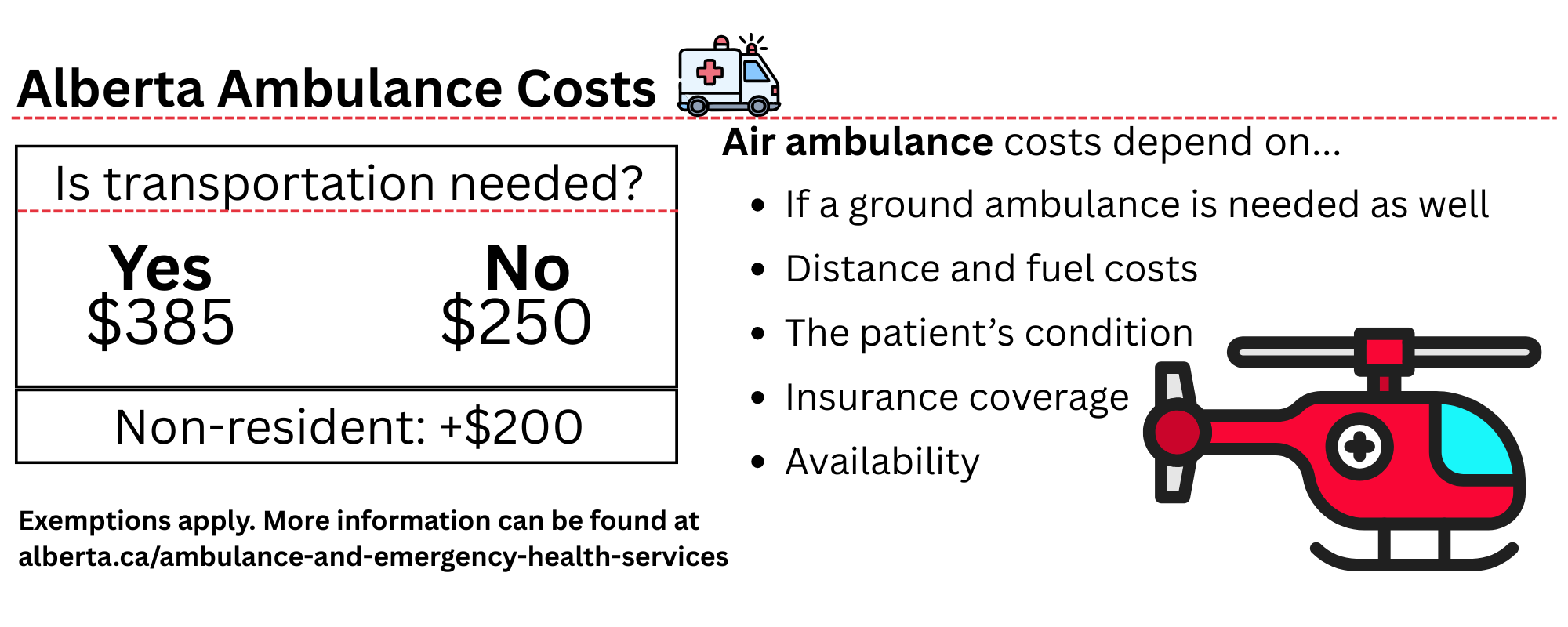Women suffer mental and financial consequences because of workplace harassment. Graphic by Laura Castro.
One in four women have reported experiencing sexual harassment in their workplace. A workplace is a space where individuals complete their work duties, projects and earn their winnings. For 25 per cent of women in Canada, the workplace is a space in which they have experienced sexual harassment, or continually experience harassment.
According to 150 Statistics Canada, just under half of workers (47 per cent) have witnessed inappropriate sexualized behaviour in a work-related setting. Marla Pasolli, a student at the University of Lethbridge, says the effects of this kind of workspace can be lasting on a woman and affect how they perform in the workplace on a day-to-day basis.
“I’m always more concerned about what I’m wearing and about how men are going to perceive me. I am more concerned with what I should be doing differently so that they are okay with how I’m working and less about my actual abilities. They’re also generally not thinking that much about my abilities because all they can see is that I’m a woman and at the end of the day that’s all they really care about,” Pasolli said.
Another study shows that women who had been targeted in the workplace usually reported that a man was responsible. In these reports, 67 per cent of women said they had been exposed to sexually explicit photos while 78 per cent or women have reported experiencing unwanted physical contact or sexual relations.
Kristine Cassie, CEO of Chinook Sexual Assault Centre says employers should introduce training programs for their staff to educate them and enforce the rule against sexual harassment at work. Anti-harassment and discrimination laws have been put into place to prevent these incidents from occurring. According to the same report mentioned earlier, 32 per cent of women have said their employer had not provided them information on how or where to report sexual harassment or assault. Pasolli says employers should be doing more to protect their workers on-site.
“They need to reconsider how they’re training people. Training is a big issue. If you’re not being trained to not treat people in a poor manner, especially when it comes to in the workplace, then you don’t have a good workplace,” Pasolli said.
Studies show that the percentage of harassment in the workplace can vary depending on the job. Male-dominated fields tend to have higher risk rates than other job sites. Just under half of women working in the trades have reported harassment while over 50 per cent of women in sales said to have experienced inappropriate sexualized behaviour. Pasolli says that putting your own safety and health first in these situations is more important than earning that hourly wage.
“At the end of the day, your job isn’t your life. Your life is what matters. So, if you’re uncomfortable where you’re working, don’t be there anymore. Money will come a different way, but you being uncomfortable every day is something that should matter more than anything else,” Pasolli said.
Many women have used their sick leave and annual leave to avoid their harassers. A result of mental health issues is prevalent in these cases varying from depression, anxiety and post traumatic stress disorder (PTSD). Reports show the effects aren’t just mental but financial too. One in 10 women have suffered negative financial consequences.
Studies show that victimization, misconduct and discriminatory acts can be prevalent in places of work. Not just from fellow co-workers but from clients as well. Laws such as the Canadian Human Rights Code aim to protect people from sexual harassment. Yet, a widespread number of women still report experiencing this type of discrimination. These numbers show that women’s choices and economic success are being affected. It shows that women have been suffering from psychological and physical effects of sexual harassment. Pasolli says that if individuals believe they have a problem at work then they should not discount their feelings.
“It’s way better to be overly cautious than to not consider yourself as a victim. Everybody can be a victim like it’s not exclusive to any one type of person,” Pasolli said.
An article by 150 Statistics Canada shows that consistent discriminatory and sexualized behaviour can enforce stereotypes and create a sense of normality in this behaviour. Resources such as the Chinook Sexual Assault Centre have been put into place to help and listen to women’s issues with harassment and hopefully bring awareness to this issue. Contact them at csacleth.ca or call (403) 694-1094.



